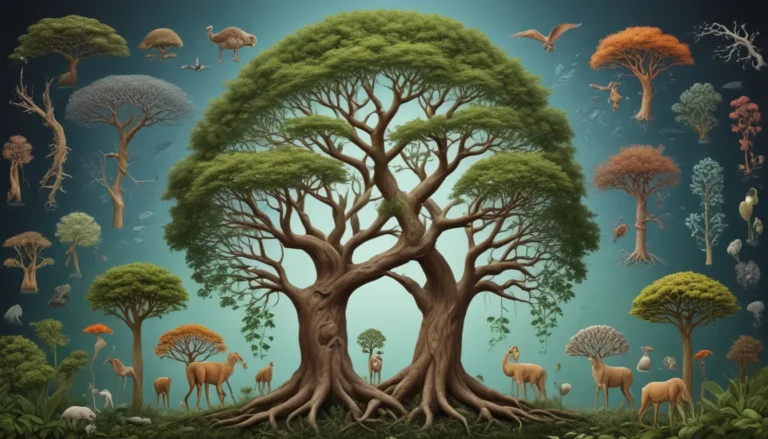A Note About Images: The images used in our articles are for illustration purposes only and may not exactly match the content. They are meant to engage readers, but the text should be relied upon for accurate information.
Human population growth is a captivating subject that has intrigued many over the years. From the dawn of our ancestors to the modern era, the global population has been steadily increasing, presenting both challenges and opportunities for our planet. In this article, we will delve into 20 unbelievable facts about human population growth, shedding light on the extraordinary dynamics that drive this phenomenon and its implications for our world.
Understanding Population Growth
The Rapid Rise of the Global Population
The human population soared to 7.7 billion in 2019, more than doubling from 3.7 billion in 1960. This exponential growth highlights the unprecedented challenges it poses to our resources and environment.
The Historical Perspective
It took over 200,000 years for the world’s population to reach 1 billion in 1804. However, in a little over two centuries, it has multiplied more than sevenfold, demonstrating the remarkable pace of population growth.
Global Population Trends
Populous Nations: China and India
China stands as the most populous country with approximately 1.4 billion people, closely followed by India with around 1.3 billion inhabitants. These nations play a significant role in shaping global population dynamics.
Africa’s Future Growth
Africa is projected to be the fastest-growing continent, with its population estimated to reach 4 billion by 2100. This rapid growth underscores the need for sustainable practices to address the associated challenges.
Changing Growth Rates
The global population growth rate has been steadily declining. In the 1960s, it was at a rate of 2.3% per year, but today it stands at around 1.05%, reflecting a shift in global demographics.
Impacts of Population Growth
Projected Expansion
The world’s population is expected to reach 9.7 billion by 2050, with estimates stabilizing around 11 billion by the end of the century. This growth presents challenges in managing resources and environmental sustainability.
Strain on Resources
Rapid population growth exerts pressure on essential resources such as food, water, energy, and land, leading to environmental degradation and potential conflicts. Sustainable practices are crucial in addressing these challenges.
Urbanization
Population growth often results in urban sprawl, leading to the expansion of cities and encroachment on natural habitats. This phenomenon poses challenges like overcrowding, inadequate infrastructure, and increased pollution.
Addressing Population Growth
Education and Family Planning
Access to education and family planning play a critical role in stabilizing population growth and reducing strain on natural resources. Studies have shown that empowering individuals, especially women, with education can lead to lower birth rates.
Economic and Social Challenges
Aging populations in many countries present economic and social challenges due to declining birth rates and increased life expectancy. This trend highlights the need for comprehensive social security systems and healthcare services.
Sustainable Development
Promoting sustainable practices such as renewable energy, responsible consumption, and equitable resource distribution is essential for managing population growth and ensuring environmental well-being. Balancing growth with sustainability is key to a prosperous future.
Conclusion: Working Towards a Sustainable Future
Human population growth presents a complex and multifaceted challenge that requires collective action and forward-thinking solutions. By understanding the implications of population growth and emphasizing education, family planning, and sustainable practices, we can pave the way for a more balanced and sustainable world.
FAQs: Exploring Further
- Current World Population: The estimated world population is around 7.9 billion and counting.
- Global Population Growth: Yes, the global population continues to grow, albeit at a slower rate in recent years.
- Factors Driving Growth: Increased life expectancy, healthcare advancements, technology, and high birth rates contribute to population growth.
- Environmental Impact: Population growth strains natural resources, leads to deforestation, loss of biodiversity, and exacerbates food and water scarcity.
- Strategies for Management: Family planning, education, empowering women, promoting sustainability, and effective policies are key strategies for managing population growth.
- Concerns of Overpopulation: Overpopulation poses real concerns, including resource depletion, environmental degradation, and social and economic challenges.
- Consequences of Unchecked Growth: Unchecked population growth can lead to increased poverty, strain on infrastructure, and threats to global stability.
- Benefits of Growth: Population growth can spur economic growth, innovation, cultural diversity, and a larger labor force.
- Individual Contributions: Making informed choices about family planning, supporting population-focused organizations, and adopting sustainable lifestyles can help manage population growth.
- Government Role: Governments play a crucial role in managing population growth through policies, regulations, and investments in education, healthcare, and sustainable development.
As you continue your journey of discovery into the realms of demography, sustainable development, and overpopulation, remember that each fact and insight you encounter contributes to a deeper understanding of our ever-evolving world. Embrace the knowledge, challenge your assumptions, and explore the possibilities for a sustainable future driven by collective action and innovative solutions. Together, we can make a positive impact and shape a better world for generations to come.






